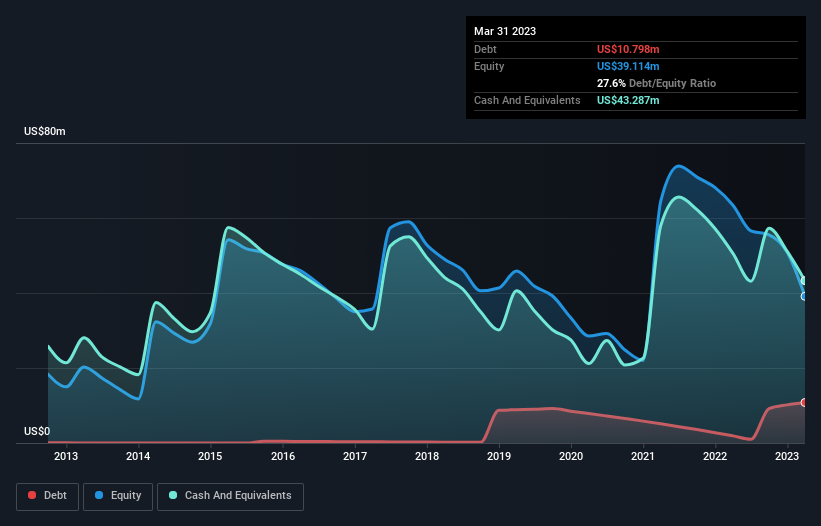BioLineRx (TLV:BLRX) Has Debt But No Earnings; Should You Worry?
David Iben put it well when he said, 'Volatility is not a risk we care about. What we care about is avoiding the permanent loss of capital.' It's only natural to consider a company's balance sheet when you examine how risky it is, since debt is often involved when a business collapses. Importantly, BioLineRx Ltd. (TLV:BLRX) does carry debt. But the real question is whether this debt is making the company risky.
Why Does Debt Bring Risk?
Generally speaking, debt only becomes a real problem when a company can't easily pay it off, either by raising capital or with its own cash flow. In the worst case scenario, a company can go bankrupt if it cannot pay its creditors. While that is not too common, we often do see indebted companies permanently diluting shareholders because lenders force them to raise capital at a distressed price. Of course, plenty of companies use debt to fund growth, without any negative consequences. When we examine debt levels, we first consider both cash and debt levels, together.
Check out our latest analysis for BioLineRx
What Is BioLineRx's Net Debt?
The image below, which you can click on for greater detail, shows that at March 2023 BioLineRx had debt of US$10.8m, up from US$1.90m in one year. But it also has US$43.3m in cash to offset that, meaning it has US$32.5m net cash.

A Look At BioLineRx's Liabilities
According to the last reported balance sheet, BioLineRx had liabilities of US$12.0m due within 12 months, and liabilities of US$17.5m due beyond 12 months. Offsetting these obligations, it had cash of US$43.3m as well as receivables valued at US$302.0k due within 12 months. So it can boast US$14.1m more liquid assets than total liabilities.
This surplus suggests that BioLineRx is using debt in a way that is appears to be both safe and conservative. Due to its strong net asset position, it is not likely to face issues with its lenders. Simply put, the fact that BioLineRx has more cash than debt is arguably a good indication that it can manage its debt safely. The balance sheet is clearly the area to focus on when you are analysing debt. But it is future earnings, more than anything, that will determine BioLineRx's ability to maintain a healthy balance sheet going forward. So if you want to see what the professionals think, you might find this free report on analyst profit forecasts to be interesting.
Since BioLineRx doesn't have significant operating revenue, shareholders may be hoping it comes up with a great new product, before it runs out of money.
So How Risky Is BioLineRx?
We have no doubt that loss making companies are, in general, riskier than profitable ones. And we do note that BioLineRx had an earnings before interest and tax (EBIT) loss, over the last year. And over the same period it saw negative free cash outflow of US$29m and booked a US$32m accounting loss. Given it only has net cash of US$32.5m, the company may need to raise more capital if it doesn't reach break-even soon. Even though its balance sheet seems sufficiently liquid, debt always makes us a little nervous if a company doesn't produce free cash flow regularly. The balance sheet is clearly the area to focus on when you are analysing debt. However, not all investment risk resides within the balance sheet - far from it. These risks can be hard to spot. Every company has them, and we've spotted 5 warning signs for BioLineRx (of which 1 is potentially serious!) you should know about.
Of course, if you're the type of investor who prefers buying stocks without the burden of debt, then don't hesitate to discover our exclusive list of net cash growth stocks, today.
Valuation is complex, but we're here to simplify it.
Discover if BioLineRx might be undervalued or overvalued with our detailed analysis, featuring fair value estimates, potential risks, dividends, insider trades, and its financial condition.
Access Free AnalysisHave feedback on this article? Concerned about the content? Get in touch with us directly. Alternatively, email editorial-team (at) simplywallst.com.
This article by Simply Wall St is general in nature. We provide commentary based on historical data and analyst forecasts only using an unbiased methodology and our articles are not intended to be financial advice. It does not constitute a recommendation to buy or sell any stock, and does not take account of your objectives, or your financial situation. We aim to bring you long-term focused analysis driven by fundamental data. Note that our analysis may not factor in the latest price-sensitive company announcements or qualitative material. Simply Wall St has no position in any stocks mentioned.
About TASE:BLRX
BioLineRx
A commercial stage biopharmaceutical company, develops and commercializes therapeutics for oncology and rare diseases.
Excellent balance sheet with slight risk.
Market Insights
Community Narratives



